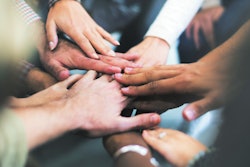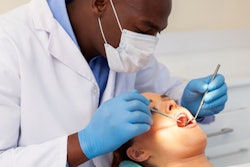
2018 was the first year that the majority of dental school applicants were women and nonwhite, according to Richard Valachovic, DMD, president and CEO of the American Dental Education Association (ADEA). The increasing diversity of the dental school applicant pool may signal a fundamental shift for the profession in the years ahead.
While the demographics of those who actually enroll in dental school vary from the applicant pool, the change in the pool is important, Dr. Valachovic said. Notably, the better that dentists reflect the demographics of the U.S. as a whole, the better the profession can serve an increasingly diverse population.
"There's great literature now that people want to be treated by someone from their own community," Dr. Valachovic told DrBicuspid.com. "Having people who come from backgrounds that are similar to the communities that they're going to be working in is really critical to the healthcare that gets delivered."
Dentistry as a 'first profession'
In the U.S., dentistry has long been a well-regarded profession. As such, it is often the "first profession" for many immigrant families.
 Richard Valachovic, DMD.
Richard Valachovic, DMD."At one time, it was the Italians or the Germans or, for me, the Slovaks," Dr. Valachovic said. "Dentistry has always been a sort of 'first profession' in families that have come to this country, and over the past few years, we've seen a dramatic change."
Today, many of the nonwhite dental school applicants are the children of Asian immigrants, including those from South Korea, China, Taiwan, Vietnam, and India. Similarly, there has been a marked increase in the number of Hispanics applying to and enrolling in dental school in the past few years.
At the same time, more women are entering dental school. In 2016, there were about even numbers of male and female dental students, and the number of women dentists is projected to continue increasing through the 2030s.
This increase of racial, ethnic, and gender diversity may have long-reaching effects on the profession, according to Dr. Valachovic. For instance, both women and racially/ethnically diverse individuals are more likely to participate in Medicaid, and women are less likely to own practices. These shifts may contribute to the more equitable distribution of dental care and also the continuing rise of dental service organizations, he noted.
"As we get more women and minorities in dentistry, that may change things," Dr. Valachovic said. "If you're willing to take Medicaid, then it also implies you're willing to help care for those populations that may have additional difficulties with access to care because of financial resources."
Increasing diversity vs. ideal diversity
While dentistry has grown increasingly diverse, the gains have not been equal across all racial and ethnic groups, Dr. Valachovic noted. For instance, the numbers of American Indian and black/African-American dental school applicants have fallen in recent years.
"In an ideal world, the representation of different racial and ethnic groups in a profession like dentistry would reflect those proportions as they are in the general population," he said. "If we look at black/African-Americans, they're about 12% of the U.S. population, but they're only 5% of dentists in America, so they're underrepresented in comparison to the population overall."
However, Dr. Valachovic also acknowledged that ideal racial and ethnic diversity is also contingent on students being able to succeed in such a rigorous profession. For many students, success in dentistry starts long before they fill out dental school applications.
"The reality is if you haven't had algebra in high school, you're probably not on the path to get the prerequisites that you have to have in order to get into dental school or medical school or some other kind of professional school," he said. "In many ways, it's unfair to put people in a situation where they don't have the background skills and confidence to take on that degree."
Will current trends continue?
The increased number of women in dentistry is expected to continue, but the future of racial/ethnic diversity in dentistry is harder to say. The ADEA supports some programs, including the Summer Health Professions Education Program, that help prepare undergraduate students from underrepresented communities to apply to and ultimately succeed in a program like dentistry.
However, Dr. Valachovic is also concerned that larger trends may impact the success of programs aimed at increasing the number of students from underrepresented backgrounds. For instance, on July 3, the U.S. Justice Department and Department of Education withdrew several guidance documents on the use of race-conscious admissions policies in education, a move that worries Dr. Valachovic.
"When you take the light off of something that really is important, then it's easy to revert back to the way things were," he said.
Dr. Valachovic also noted that ADEA's stance on diversity has not changed.
"Because the withdrawal of these documents does not actually change the law regarding race-conscious admissions policies, ADEA will continue its work to promote holistic admissions processes in North American academic dental institutions, including technical training and assistance for our members," the ADEA stated in a press release. "Additionally, please know that ADEA remains committed to the educational benefits of diversity and to developing a culturally competent workforce that is equipped to serve the oral health needs of an increasingly diverse nation."



















